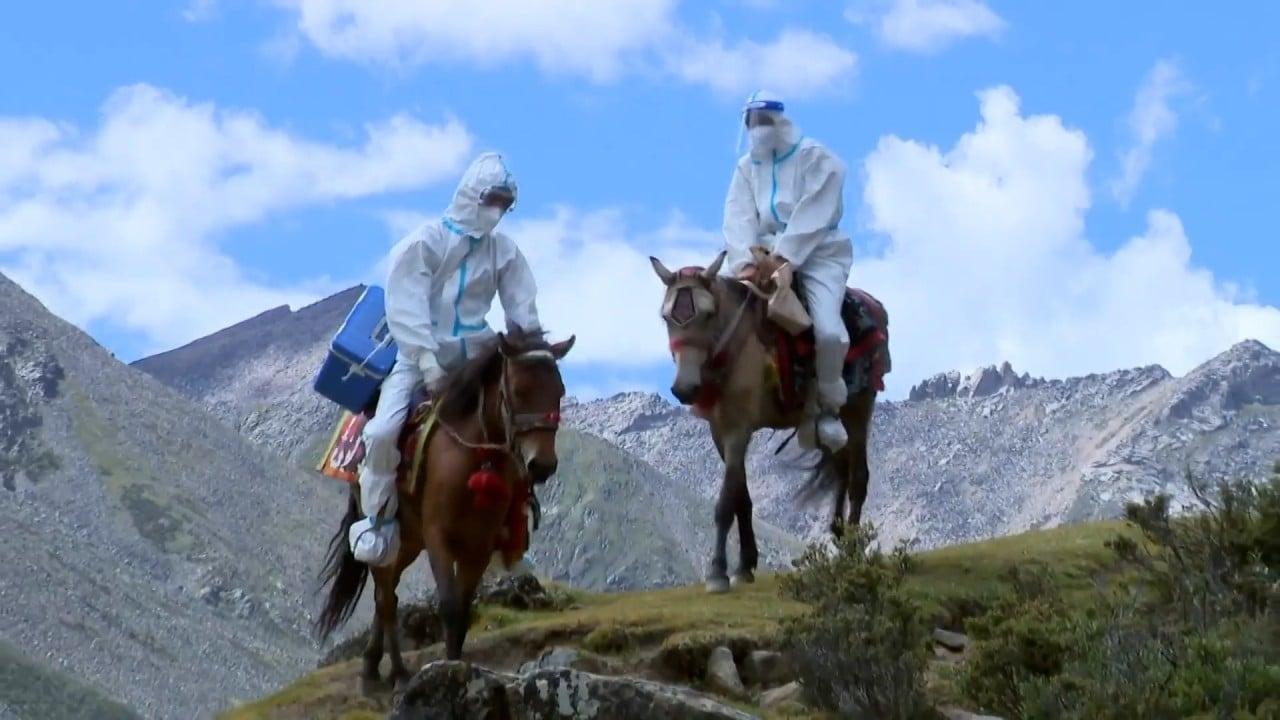
Almost all the deaths were caused by hypothermia and a lack of oxygen, state broadcaster CCTV said.
Strong winds and unseasonably warm weather had triggered the snowslip in the steep slopes 4,500 metres (14,764 feet) above sea level, both Xinhua and CCTV said, citing initial weather reports.
Images broadcast by CCTV on Friday showed mechanical diggers at work as rescuers searched the deep snow for buried vehicles on a road leading to a highway tunnel in the city of Nyingchi in Tibet’s southwest.
The vehicles were trapped when tonnes of snow and ice suddenly collapsed onto a section of the road between Pai village in Mainling county and the exit of the Doxong La tunnel in Medog county at around 8pm on Tuesday – days before the Lunar New Year, which starts on Sunday.
Relief workers saw vehicles crushed by heavy piles of snow at the avalanche site, some 10km (6 miles) from the nearest village in Medog, according to nationalist tabloid the Global Times.
Most of the victims were local Tibetans heading home for the holidays, Global Times reported, citing a local villager.
“The snow was so deep, it was waist-high, and the road was very slippery. Many rescuers stumbled all the way there,” the paper cited a health centre employee as saying.
The CCTV report said nearly 1,350 personnel from the local fire brigade, forest protection rangers, military garrisons, militias and grass-root cadres, as well as 236 vehicles, had been mobilised for the rescue work. The machines helped rescuers dig out a 7.5km path near the avalanche area and another 10.5km of road surface through deep snow to clear access routes, it said.
Nyingchi, which lies at an elevation of around 3,000 metres (8,400 feet), is about five hours’ drive from Lhasa, the capital of the Tibet autonomous region, along a highway that opened in 2018.
Avalanches are not uncommon in the Himalayas, as extreme weather events become more frequent.
Last October, at least 26 people died when a mountaineering expedition was caught in an avalanche on Mount Draupadi ka Danda-II in India’s northern state of Uttarakhand, which borders Tibet.
